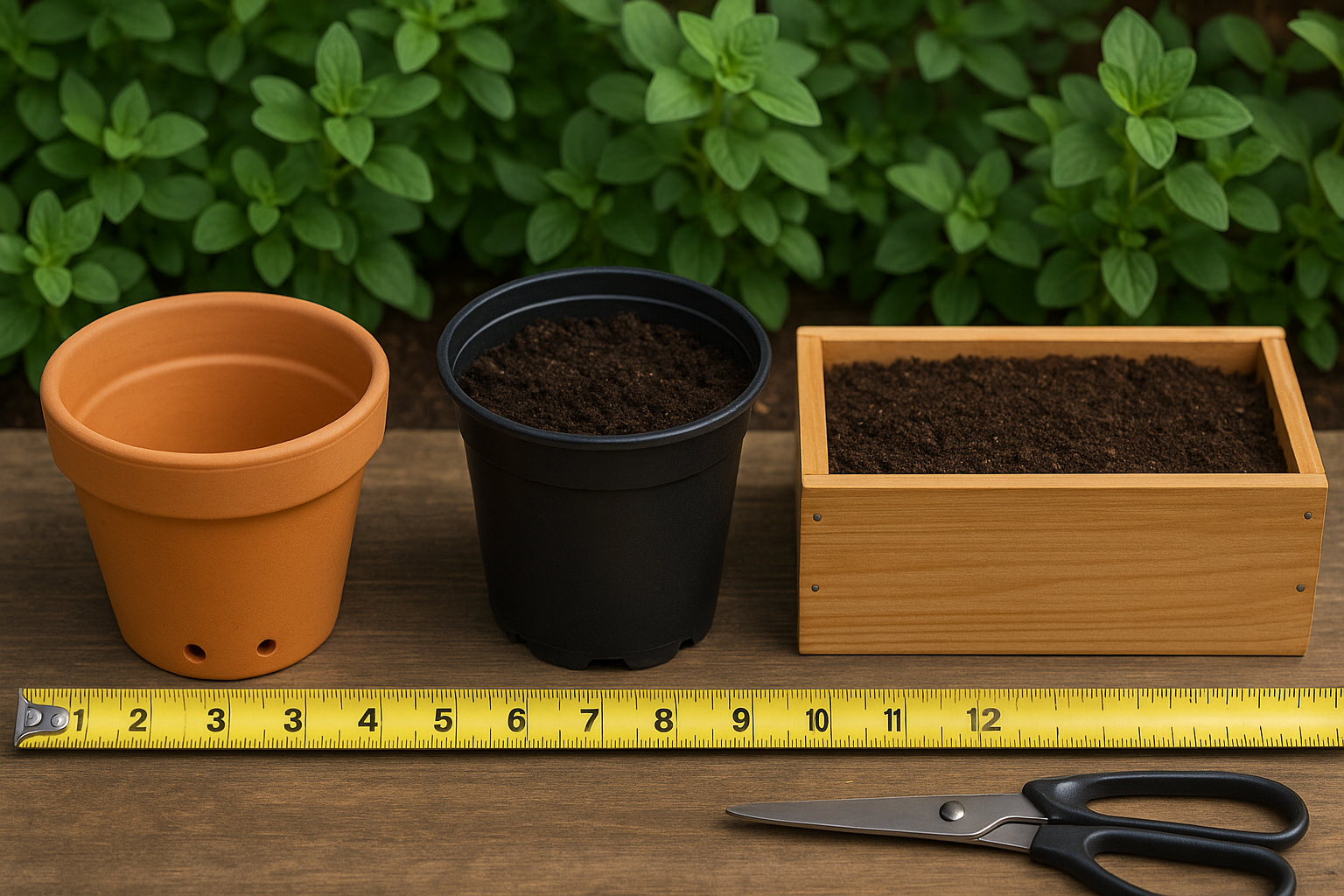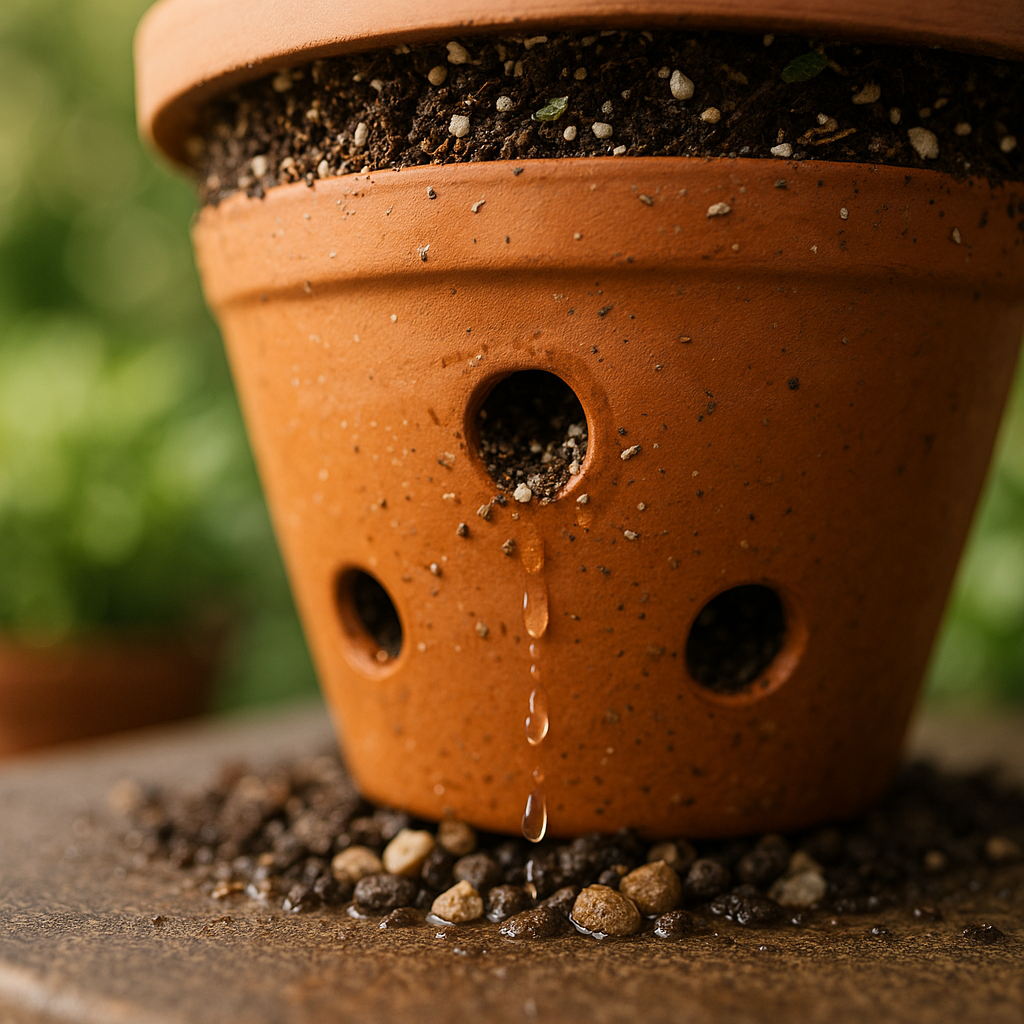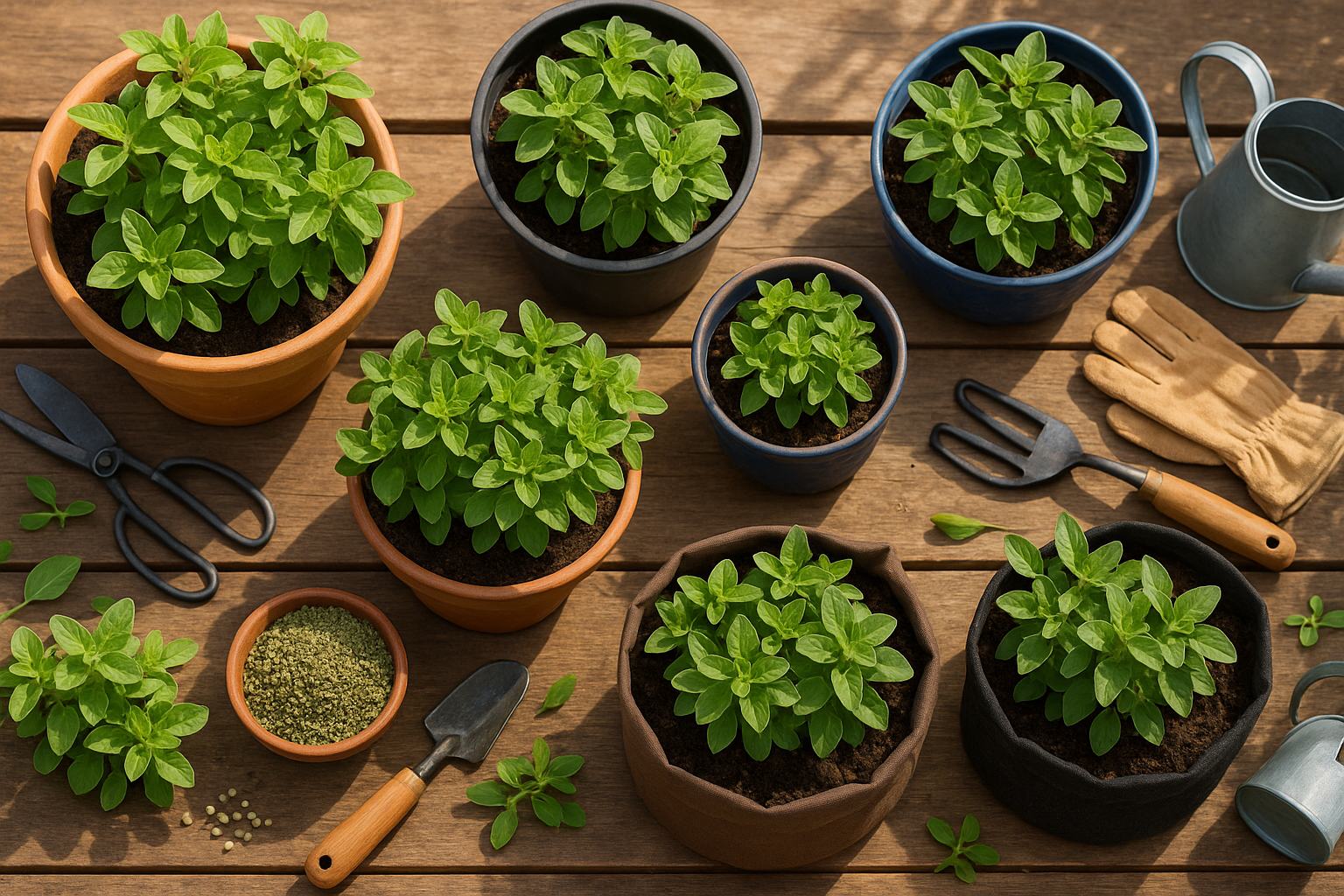Introduction
Growing oregano in containers has become a favorite option for home gardeners and culinary enthusiasts alike. Whether you have a tiny balcony, limited yard space, or simply want fresh herbs within arm’s reach, oregano in containers offers flexibility and control you just can’t get from planting in the ground.
But the secret to lush, aromatic oregano doesn’t just lie in watering or sunlight—it all starts with the container you choose. The right container dramatically improves oregano’s root health, encourages stronger growth, and even boosts the intensity of its flavor. If the pot is too shallow, oregano roots get cramped, waterlogged, or stressed. Lack of drainage can mean soggy soil and unhappy, wilted plants.
Get it right, though, and you’ll notice heartier leaves, more vigorous stems, and a plant that’s easier to care for daily. In this article, we’ll break down exactly what to look for—from the best size and depth to ideal drainage and material choices. Plus, we’ll share practical tips so you can avoid common pitfalls, save time on maintenance, and enjoy a thriving oregano harvest no matter where you live.
Let’s make growing oregano in containers both simple and successful.
Ideal Container Size and Depth for Oregano

Oregano thrives when its roots have enough room to spread, so choosing the right container size and depth is essential for healthy growth. Aim for a container that is at least 12 inches wide and 8–10 inches deep. This provides ample space for the roots while preventing overcrowding, which can lead to poor airflow and disease.
Smaller pots can stress the plant and dry out quickly, while oversized containers may hold too much moisture. When selecting container types, consider the following:
- Clay pots: These are great because they allow excess water to evaporate, reducing the risk of root rot. However, they dry out quickly and may require more frequent watering, especially outdoors.
- Plastic pots: These retain moisture longer and are lighter to move, but they can overheat if placed in direct sun, such as on a patio or balcony.
- Window boxes: Ideal for growing multiple herbs on a sunny windowsill, including oregano. Just ensure they have drainage holes to prevent soggy roots.
- Raised beds: These support larger, healthier oregano plants and allow for easier access. However, they require outdoor space and more initial setup.
For indoor growers, choose containers with good drainage and consider lightweight materials like plastic or resin for easy repositioning to catch the best sunlight. Outdoor growers might prefer heavier pots or raised beds to withstand wind and weather.
Regardless of location, make sure containers have ample drainage holes and use a well-draining potting mix to keep oregano roots healthy and thriving. For best results, check soil moisture regularly and repot every couple of years to refresh the soil and accommodate growing roots. This careful approach ensures your oregano has the best environment to flourish, whether indoors on a kitchen shelf or outside in the garden.
Why Drainage Is Crucial for Oregano

Oregano thrives best in well-drained soil, and proper drainage is essential because this herb is particularly sensitive to overwatering. When oregano roots stay soggy, they become highly susceptible to root rot—a condition that can quickly wipe out an otherwise healthy plant.
To keep your oregano safe, start by choosing containers with multiple drainage holes at the base; these allow excess water to escape freely, preventing the soil from becoming waterlogged. Pots with raised feet or small risers are especially useful since they lift the container off flat surfaces and ensure water doesn’t pool at the bottom. Terra cotta pots are a smart choice, too, because they’re naturally porous and wick away extra moisture.
You can further improve drainage by adding a layer of gravel, pebbles, or broken clay pots at the bottom before filling with soil—this keeps roots above any standing water. For the soil itself, mix regular potting soil with sand, perlite, or orchid bark to create a fast-draining blend perfect for Mediterranean herbs like oregano.
These simple adjustments make a big difference, keeping your oregano healthy and flavorful season after season—even if you’re sometimes a bit generous with the watering can.
Best Materials for Oregano Containers
Choosing the right container material can make a big difference in how well your oregano thrives. Terracotta pots are a top pick for many gardeners because they’re porous, allowing good airflow to the roots and helping prevent root rot. Oregano, which prefers drier soil, benefits from this breathability. However, keep in mind that terracotta dries out quickly—making it great in humid climates but less ideal in arid regions or for busy gardeners who often forget to water.
Ceramic pots, especially glazed ones, offer a more decorative option and retain moisture much longer, making them suitable if you live somewhere hot or tend to miss watering sessions. However, they’re heavier and can be more expensive. Plus, you’ll need to watch out for overwatering.
Plastic pots are lightweight and easy to move around. They retain moisture well, so if your summers are scorching or you’re growing oregano indoors in a dry home, plastic could be your best bet. Just make sure the pot has plenty of drainage holes—oregano hates soggy roots.
For those with limited space or who want to move their plants often, fabric grow bags are becoming popular—they’re breathable, lightweight, and encourage air pruning of roots, leading to a well-developed root system. However, because they lose water quickly, you’ll need to water more often or use them in moist climates.
Ultimately, the best material depends on your climate, how much attention you can give your plants, and where you plan to grow your oregano—whether it’s balconies, sunny patios, or sunny kitchen windowsills, all have different needs.
Positioning Your Oregano Container for Success
Getting the positioning right for your oregano container is key to growing a healthy, flavorful herb. Oregano thrives with at least six hours of direct sunlight daily and prefers warm temperatures, so finding a spot that delivers consistent light is essential.
Whether you’re growing oregano on a patio, balcony, or sunny windowsill, always look for the brightest spot available. South-facing windows or outdoor locations that get midday sun are excellent choices.
If you notice your plant looking leggy or its leaves lack their usual punchy flavor, it’s probably not getting enough light. Try rotating the pot regularly or moving it throughout the season to chase the sun.
The beauty of container gardening is its portability—on scorching summer days or during sudden cold snaps, you can easily bring your oregano inside or shift it out of intense midday heat.
Be mindful of windy spots, which can dry out or stress the plant; screens or nearby walls can offer extra shelter. Don’t forget to check the temperature as well—oregano grows best in warmth and might struggle if exposed to frosty nights or prolonged chills.
If you’re working with limited space, try placing your container on a raised plant stand or shelf. This can help maximize sunlight exposure and keep your oregano within easy reach for harvesting.
By taking advantage of your container’s mobility and being attentive to changing conditions, you’ll give your oregano the strongest chance to thrive no matter where you’re gardening.
Soil and Maintenance Tips for Thriving Oregano Plants
For thriving oregano in containers, choose a well-draining soil mix—combine equal parts potting soil with coarse sand or perlite for excellent aeration and to prevent root rot. Add a handful of compost for slow-release nutrients, but avoid heavy, moisture-retentive soils.
Water oregano only when the top inch of soil feels dry; overwatering is a common mistake that leads to soggy roots and yellowing leaves. In hot months, you may need to water every few days, but always check the soil before adding more.
Regularly pinch back the tips to encourage bushier growth and cut away flower buds to keep the leaves flavorful. Every two years, or whenever you notice roots circling the bottom or the plant outgrowing its space, gently repot into a container slightly larger and refresh the soil mix.
Watch out for common issues—wilted or crispy leaves often signal underwatering or container roots getting too hot in direct sun, while yellow, limp foliage can indicate waterlogged soil. Aphids and spider mites sometimes attack oregano; dislodge them with a gentle spray from the hose or use insecticidal soap if the problem persists.
Above all, give your plant 6-8 hours of sunlight daily and avoid crowding with other herbs to promote good airflow. With these simple habits, your oregano will stay lush, healthy, and ready for harvest whenever you need a burst of fresh flavor.
Conclusion
Choosing the right container for your oregano is the first step in a rewarding herb gardening journey. Opt for pots that are at least 6–8 inches wide with drainage holes to keep roots healthy. Terracotta or ceramic pots work well for airflow and stability.
Use a high-quality, well-draining potting mix and place your oregano where it will receive plenty of sunlight—ideally 6 hours per day. Water when the soil feels dry to the touch, but avoid letting the roots sit in water; oregano prefers to dry out a bit between soakings.
Feed your oregano every couple of months with a balanced liquid fertilizer, but don’t overdo it—too much fertilizer can dilute the flavor. Feel free to experiment by adding companion herbs like basil or thyme in the same pot, or try growing different oregano varieties to discover which you like best.
Remember, gardening is as much about the process as the results, so have fun and celebrate small wins like snipping your first sprig for a homemade pizza. If you have questions or unique tips from your own container gardening adventures, I’d love to hear from you in the comments—let’s grow together!
